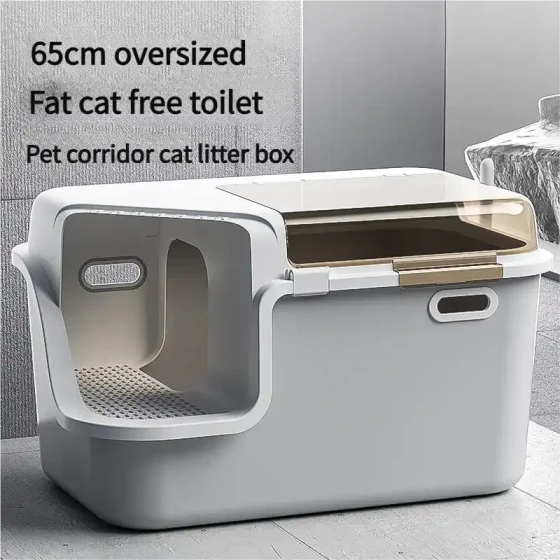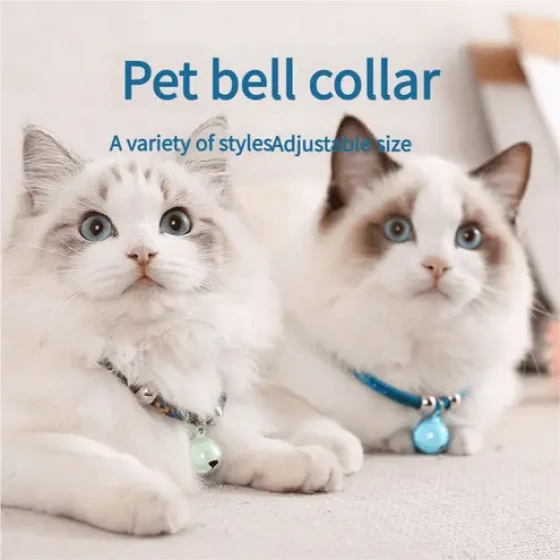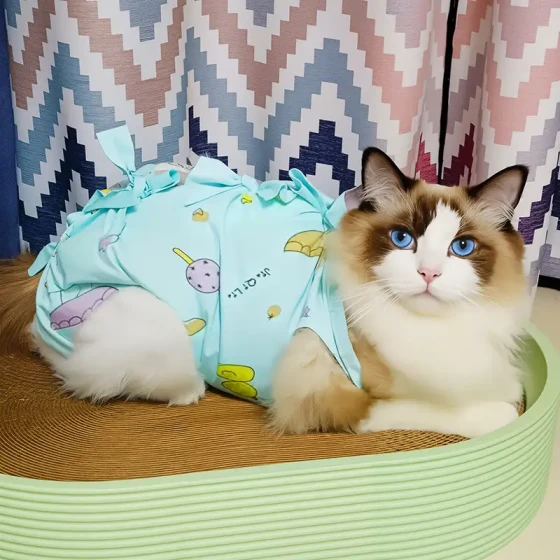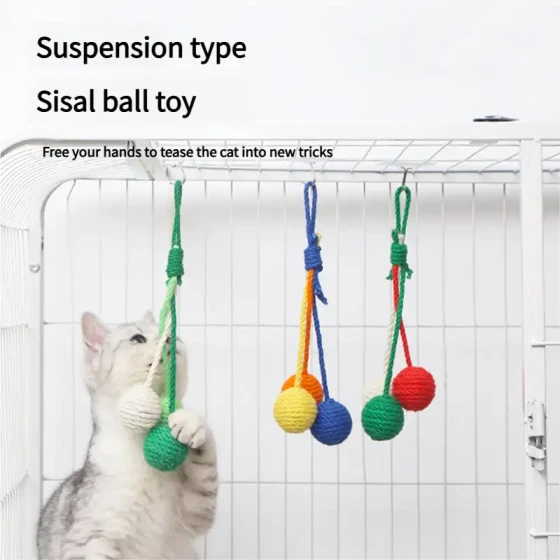Reasons Why Cats Keep Meowing_The Secrets Behind Cat Meowing
Ultimately, the continuous, overlapping, and endless "meows" from cats are not simply noise, but a unique way they communicate complexly with the world—more precisely, with us humans. What you hear is a sound, but in the cat’s context, it could be a need, emotion, plea for help, or even... a strategy. Figuring out why cats "keep meowing" is like detective work requiring careful observation and logical reasoning to truly understand their inner voice.
The meowing sound that cats make, especially directed at humans, is actually quite an interesting phenomenon. Many animal behaviorists have observed that adult cats rely more on body language, scent marking, and other sounds like purring, hissing, and trilling/chirping (short, bird-like calls) to communicate with each other, using less of the explicitly directed “meow” sound aimed at humans. This common “meow” seems to be a highly effective communication tool developed specifically during their co-evolution with humans, as if saying: "Hey, you silly two-legged beast, pay attention to me!"
So, when this small creature decides to continuously activate its “human-exclusive calling system,” what secrets might be hidden behind it?
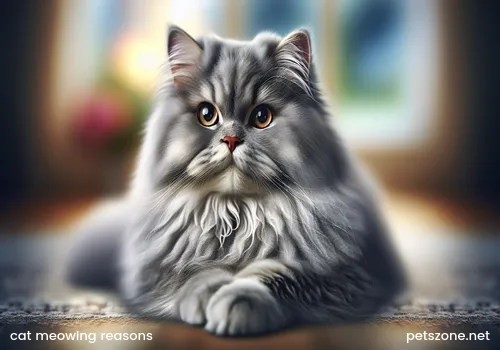
1. Basic Needs Not Met: Calls of Survival
This is the most common and straightforward reason, much like a baby crying.
- Hungry or Thirsty: This is the most primal drive for cats. An empty food bowl, a dry water dish, or feeling that what you provide is too little or too slow. Some cats will even give you a “feed me” command, circling you, staring at you, accompanied by continuous meowing. Make sure their food and water are adequate and fresh.
- Litter Box Issues: Cats are famously clean. If the litter box is too dirty, the amount of litter insufficient, or the location unsatisfactory, they may express their dissatisfaction and desire for a clean environment through meowing. This is a protest meaning, “I need a clean place to do my business, please take care of it immediately!”
2. Emotional Expression: Revealing Inner Drama
Cats’ emotional world is much richer than we imagine.
- Seeking Attention and Interaction: Many cats meow simply because they want you to play with them, pet them, or just be with them. They may be bored, lonely, or treat you as their primary social partner. This type of meowing usually comes with rubbing against legs, rolling over, showing the belly, etc. They have learned that meowing can get your response, whether it’s cuddling, playing, or just a gentle "good kitty."
- Boredom or Excess Energy: Especially young cats, full of energy but not sufficiently stimulated, will meow to get your attention hoping for some excitement. It’s like a child nagging an adult saying, "I have nothing to do."
- Anxiety or Stress: Environmental changes (moving house, new family members), separation anxiety (when you leave home), or feeling threatened can cause cats to meow persistently in distress. This meowing is often accompanied by hiding, loss of appetite, excessive grooming, and other stress symptoms.
- Feeling Pain or Discomfort: This is the situation to be most cautious about. Cats are masters at hiding pain, often expressing discomfort through subtle behavior changes. Persistent or abnormal meowing may be their distress calls when they cannot endure anymore. Particularly if a cat that rarely meows suddenly vocalizes frequently with a harsh, sorrowful tone, it demands immediate attention.
3. Physiological State Impact: Signals from the Body
Certain physiological conditions can also increase a cat’s meowing.
- Heat Cycle: Unspayed female cats will emit very loud, continuous howling during estrus, attempting to attract males. This meowing usually accompanies arching the back, raising the hindquarters, and frequent rubbing behaviors, all clear mating signals. Male cats may also call out anxiously when sensing a female in heat.
- Cognitive Dysfunction in Senior Cats: Similar to Alzheimer’s in humans, some older cats experience cognitive decline, showing disorientation, forgetting where they are, and reversed sleeping patterns, causing confusion and anxiety leading to continuous meowing, especially at night. Veterinarians compare this to “sundown syndrome” seen in elderly humans, where symptoms worsen at dusk or nighttime.
- Declining Vision or Hearing: As cats age, some lose sight or hearing, making them feel vulnerable and anxious, leading to vocalizing to locate or seek comfort.
4. Communication Habits: Personality and Breed Differences
Some cats are naturally “talkative.”
- Breed Characteristics: Certain cat breeds, like Siamese cats, are known for their loud, continuous meows and “talkative” personalities. If you own such a cat, frequent meowing might just be its “factory settings.”
- Learned Behavior: Cats are very clever and quickly learn that meowing grabs your attention and gets them what they want (food, play, door opening, or even just petting). If this meowing behavior is positively reinforced, they will use it more frequently. This is operant conditioning, a behavior you unintentionally “train”.
What to Do? Decoding the “Code” of Cat Meowing
Facing a cat that keeps meowing, the best approach is to be a careful detective and rule out possibilities.
- Basic Check: First check food bowls, water dishes, and litter boxes to ensure their basic physiological needs are met.
- Health Screening: Observe the cat’s mental state, appetite, excrement, gait, and whether there is pain response when touched. If the meowing occurs suddenly, persists without stopping, or is accompanied by other abnormal symptoms (such as depression, vomiting, diarrhea, limping), take the cat to the veterinarian immediately. Excluding illness is the most important first step.
- Environment and Emotion: Check if there have been recent changes or new stressors at home. Try interacting with the cat: does it want to play? Want you to hold it? Or just wants to be near you?
- Behavioral Adjustment: If health issues and basic needs are ruled out and the meowing is for attention seeking, try not responding to continuous meowing (only when all needs are met). Give attention and rewards only when it is quiet. This requires patience, and there may initially be an “extinction burst,” meaning the cat meows more intensely trying to get your attention—stick with it! Meanwhile, increase daily interaction time (play, grooming), especially when it’s not meowing, provide sufficient companionship and environmental stimulation (cat trees, toys, window spaces) so it won’t get bored enough to meow excessively for presence.
- Consider Spaying/Neutering: If the cat is unspayed/unneutered, meowing during heat cycles can be completely resolved by surgery.
Remember, a cat’s meowing is its way of conveying information. Understanding the reasons behind these meows is key to building a harmonious human-cat relationship. Every “meow” might be a puzzle waiting to be solved, and solving them allows you to better understand your unique, furry family member.
Possible Reference Sources:
- "The Secret Life of Cats" or other animal behavior books
- Authoritative animal welfare organizations’ pet behavior guides, such as ASPCA (American Society for the Prevention of Cruelty to Animals) or RSPCA (Royal Society for the Prevention of Cruelty to Animals)
- Relevant scientific journal research, such as studies on communication between domestic cats and humans (e.g., literature comparing domestic and feral cat vocalization patterns)
- Veterinary professional websites or books covering abnormal cat behaviors and disease symptoms.
